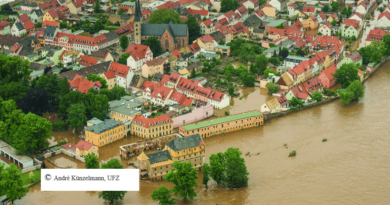White Island Volcano
Whakaari Island is located 30 miles off the North-Eastern coast of New Zealand and was formed by a stratovolcano that has been active for the past 150’000 years and has had small frequent eruptions from 1975 to 2000 making it the most active volcano in New Zealand (2). Stratovolcanoes are a type of volcano with alternating eruptive styles ; effusive eruptions (lava flows) and explosive eruption deposits create alternating types of deposits, hence the name strato or “stratified” volcano. Sulphur mining was conducted on the island when in 1914, the collapse of part of the crater rim caused a debris avalanche which killed 11 miners (2). Recent volcanic activity involved an explosion followed by the growth of a lava dome in 2012. In 2013, sulphur, steam and explosive eruptions occured, with a small explosion followed by ash emissions in 2016 (2). The volcanic activity is therefore variable, and explosions are generally moderate in size (1).

Nowadays it is a big touristic destination, and in 2019, the sudden eruption of the volcano left 21 tourists and guides dead and raises questions about the complex relationship between the dangers of anthropic activities related to volcanoes. This eruption had no clear detectable precursors, but geologists with the consulting group GNS Science reported seeing localized surface deformation a few weeks prior to the event. Surface displacement may be indicative of pressure build-up and increased magmatic activity, but in this case it was ruled out. New Zealand has advanced monitoring methods and a warning system for volcanoes based on a 0 (low activity) to 5 (high activity) scale. White Island was at the time monitored by web cameras, a seismograph and a microphone. The danger level was raised from 1 to 2 a few months before the event, corresponding to the detection of increased volcanic activity . The seismic data shows that around 17 hours before the event (5), the volcano emitted seismic energy pulses related to increasing magmatic fluid activity which could have been detected had the data been looked at more frequently. Before this incident, New Zealand did not have a real-time warning system; it relied on a database which is updated every few weeks and then relies on human scientific judgement to decide if a course of action is necessary. After this disaster, the New Zealand government decided to develop their own real-time advanced warning system in the university of Auckland, relying on automated machine-learning decisions. The machine learns by looking at specific patterns leading to an eruption collected from databases and applies it for real-time data to make predictions.

In November 2020, the danger level was once again been increased to 2 after small amounts of ash were found in a steam and gas plume coming out of the volcano. Though this may not be signs of an eruption, the volcano remains active to this day. It is not known if there is any touristic future for this island. The first rule of communicating about risks lies in the knowledge about the dangerosity of an upcoming situation. Catastrophes like this help to lower the risks in the future by helping develop more precise and inovative ways of warning and communicating. The safety around volcanoes will strongly depend not only on scientific advancement but also on the political and societal decisions which may or may not lead to the installation of advanced detection systems. No matter what progress is made, volcanoes will always present a very real and unpredictible threat to tourist and inhabitants in volcanic regions.
“It’s hard to portray uncertainty to tourists. And there’s a lot of uncertainty about volcanic eruptions, especially these rapid-onset, or essentially unpredictable, events.” (Geoff Kilgour, Scientific volcanologist for GNS )
References
(1) Andrews, Robin George, “Why the New Zealand volcano eruption caught the world by surprise”, National Geographic, 9.12.2019, https://www.nationalgeographic.com/science/2019/12/why-new-zealand-volcano-eruption-caught-world-by-surprise-white-island-whakaari/
(2) GNS Science, “About Whakaari/White Island”, https://www.gns.cri.nz/Home/Learning/Science-Topics/Volcanoes/New-Zealand-Volcanoes/Whakaari-White-Island/About-Whakaari-White-Island
(3) GNS Science , “Monitoring volcanic unrest”, https://www.gns.cri.nz/Home/Learning/Science-Topics/Volcanoes/New-Zealand-Volcanoes/Whakaari-White-Island/Monitoring-volcanic-unrest
(4) GNS Science, “Whakaari/White Island”, 11.12.2019, https://www.gns.cri.nz/Home/Learning/Science-Topics/Volcanoes/New-Zealand-Volcanoes/Whakaari-White-Island
(5) Morton, Jamie, “Whakaari/White Island volcano eruption: New alert system could have warned of tragedy”, 19.06.2020, https://www.nzherald.co.nz/nz/whakaariwhite-island-volcano-eruption-new-alert-system-could-have-warned-of-tragedy-scientists/KMG7CUGTZV5KJF2N6SAS4PWL7U/
(6) News Hub, “Whakaari/White Island’s volcanic alert level rises”, 13.11.2020, https://www.newshub.co.nz/home/new-zealand/2020/11/whakaari-white-island-s-volcanic-alert-level-rises.html
Features image : GeoNet





Mindblowingly captivating, well written, just not fan of the fact the authors name is wrong. Great work !